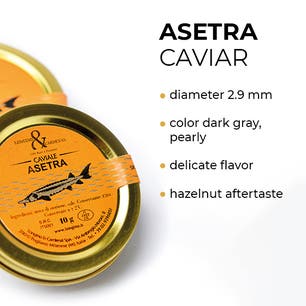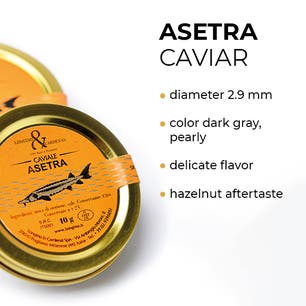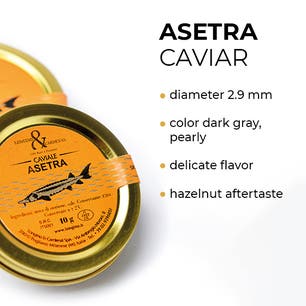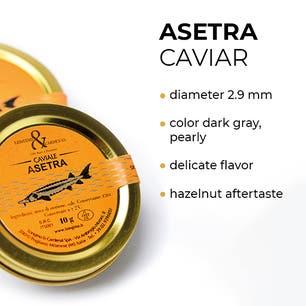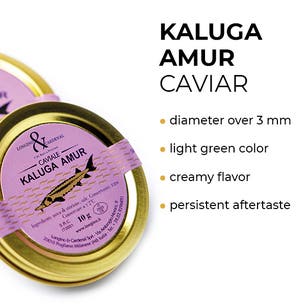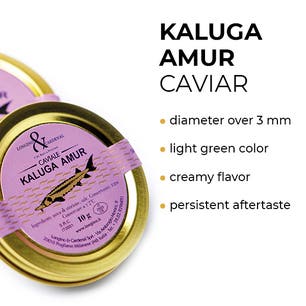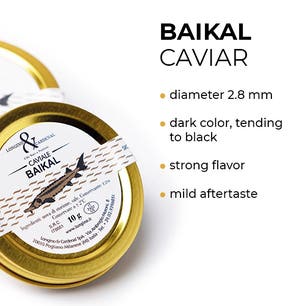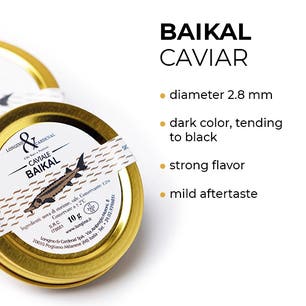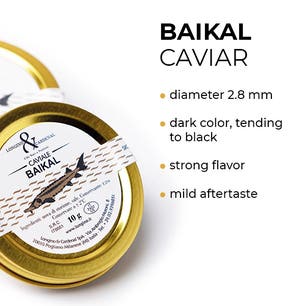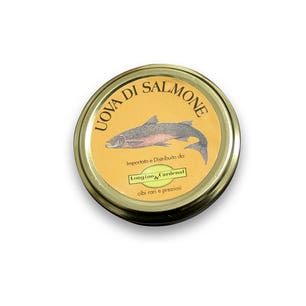Caviar: luxury, excellence and exclusivity
Caviar has always been considered the most precious and exclusive food that can be found on the market, synonymous with luxury, privilege and refinement.
For us, at Longino & Cardenal, it holds even more special importance because our story of "rarity and preciousness" really begins, more than 30 years ago, with the import of fresh caviar from Iran and its distribution in Italy.
We, at Longino, are lucky because we rely our storytelling skills on the true quality and on the excellent taste of the products we sell. Something that you'll never forget, and that you will always tell your friends with extreme pleasure, is how delicious a fine dish was or how much you appreciated a food experience that made you feel special.
Speaking of luxury, there is nothing more "rare and precious" than caviar, the most exclusive and privileged food we can taste. Let's start this journey on caviar and its production method!
What is caviar?
When we talk about caviar we are technically talking about sturgeon eggs. The sturgeon is among the oldest fish we can find in nature, whose origins are lost. The fish has an outer shell as a protection and no backbone. Nowadays, the so-called "wild caviar" is almost completely extinct: the only wild sturgeon are born and grow in freshwater basins that flow into the Caspian Sea. And of course, their fishing or capture has been banned for years.
The caviar on our online shop comes from sturgeon farmed in the pure waters of Lake Qiandao in the Zhejian state. We came up with natural pools where sturgeons are free to swim, protected in huge nets and fed only with what they would find in nature. Depending on the species, their stay in the lake can go from 6 to 8 years: they are transferred inside the reservoirs only at the end of their maturation period, when they are ready to produce eggs.
Different types of Caviar
On sale in our shop you can find different types of caviar: Asetra Caviar, with a delicate nutty flavor; Kaluga Amur Caviar, a favorite of chefs; Beluga Caviar with its creamy texture and Baikal Caviar, with a strong flavor but perfect in combination with other ingredients.
- Baikal Caviar: it has a diameter of 2.8 mm and it is dark in color, tending to black. The taste is strong with a mild aftertaste.
- Asetra Caviar: it has a diameter of 2.9 mm and it has a dark gray color, almost pearly. The taste is very delicate with a hazelnut aftertaste.
- Kaluga Amur Caviar: it has a diameter of 3 mm and it is light green. The flavor is very creamy and with a strong and persistent aftertaste.
- Beluga Caviar: it has a diameter of 3.5 mm and it's grey. It has a very silky texture that will explode on the palate in a very delicate way.
How to eat caviar
Whatever your taste preference is, we only have one suggestion for tasting caviar. Serve it cold and be sure to take it from the can with a mother-of-pearl spoon. If you are uncertain about the pairing, accompany it with a glass of champagne.
There is a famous recipe involving the combination of caviar and pasta: cold tagliolini (very thin spaghetti) with caviar and chives. A dish to serve cold, in fact, you need to cook the pasta in advance and then leave it to rest with olive oil. Plate only when you are ready to eat.
Other fish roes
Of course, caviar is fish roe, but there are other kinds of roes that will leave your guests astonished. Salmon roes are known as Red Caviar, it's a food rich in vitamins. Salmon caviar has a very bright orange color and a particularly large grain (5 to 6 mm). The flavor is rich, that's the reason why this ingredient is used for sushi dishes or even to decorate some tartines for the appetizer.
Thanks to the buttery and savory flavor, that end with a strong sea aftertaste, in Russia salmon roe is served with “blinis” (a type of round and puffy batter cake similar to pancakes) and sour cream, this is a very typical Russian dish.


